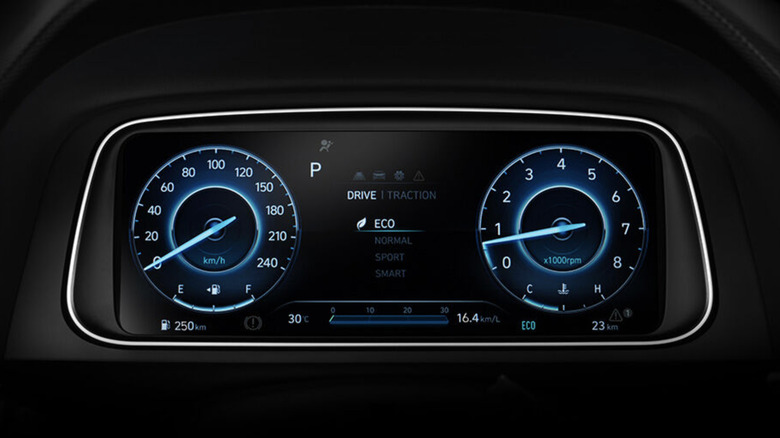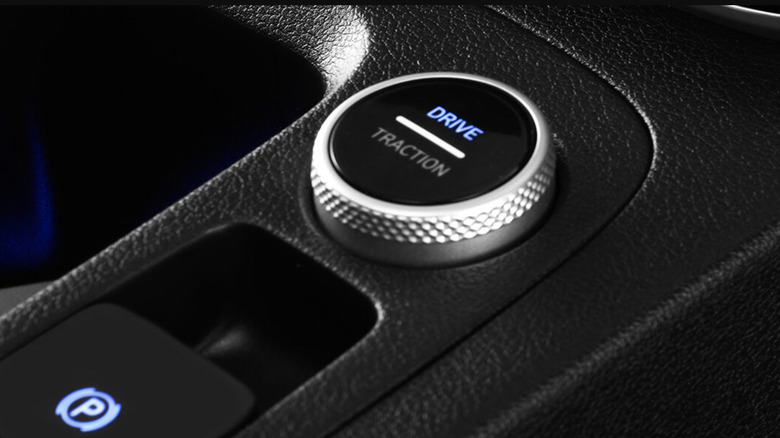Differences Between Eco & Sport Modes On Your Hyundai
Car manufacturers are always adding new things to cars that are supposed to make driving easier and more enjoyable, and eco and sport modes are two of their attempts to do so. Whether you own one of the most reliable Hyundai models ever built, have taken one for a test drive, or have simply gone for a ride in one, you've most likely noticed these options and wondered what they do. You may have even tried them out and noticed your car drove differently when one was activated versus the other, but you may not have known why or exactly what these modes were meant to accomplish. If you've felt that way, you're not alone. While more and more cars have sport and eco modes, the automotive industry hasn't done the best job of explaining what they do.
When you put your car in eco mode (short for economical mode), you'll experience slowed acceleration and, in theory, better fuel economy, although there's an ongoing debate about whether eco mode really does make vehicles more fuel efficient. In contrast, activating sport mode in your Hyundai will give it a bit of a kick. You'll notice increased horsepower and acceleration, along with improved handling and more responsive steering. Depending on your needs and driving habits, you might find activating either eco mode or sport improves your driving experience.
What's the difference between Hyundai's eco and sport modes?
If you've wondered what the eco mode in your car actually does, you're not alone. Going based on the name alone, you might guess that this mode might improve your gas mileage or be better for the environment. In practice, eco mode does a little bit of both. When you put your Hyundai in eco mode, you'll notice it takes more time for your car to accelerate. This is because eco mode reduces the engine's power output. While it won't be the best option if you're driving in stop-and-go traffic or in situations where you need to accelerate quickly, eco mode can be beneficial for long drives. When your car is in eco mode, it is expected to burn less gas and produce fewer emissions.
Saying that driving in sport mode is a completely different experience than driving in eco mode is an understatement. The best way to understand what sport mode actually does is to experience it behind the wheel. As soon as you activate Sport mode, your Hyundai becomes more responsive, with increased acceleration, horsepower, and RPM. That makes sport mode ideal for highway driving when you need to speed up to merge with traffic or pass the car in front of you. You'll also notice a more sensitive throttle response. While many people find driving in sport mode enjoyable, the downside is its higher engine power output makes it worse for your car's fuel economy.
How to switch between Hyundai's eco and sport modes
Now that you understand the differences between Hyundai's eco and sport modes, you might be ready to try them out on the road. Switching between the two modes while driving is pretty straightforward using the Drive Mode button on the center console of many Hyundai cars. From there, all you have to do is use the dial to scroll through the different modes until you find the one you want. Depending on your Hyundai's model, the mode you have active will appear on the dashboard or touchscreen. Normal mode is the default if you haven't selected eco or sport modes.
As mentioned above, eco mode will work better in some situations than sport mode, and vice versa. If you know you'll be maintaining a steady speed throughout your drive, you might want to select eco mode to encourage better fuel efficiency. On the other hand, if you know you'll need to accelerate quickly or overtake cars during your drive, sport mode might be the better option.


